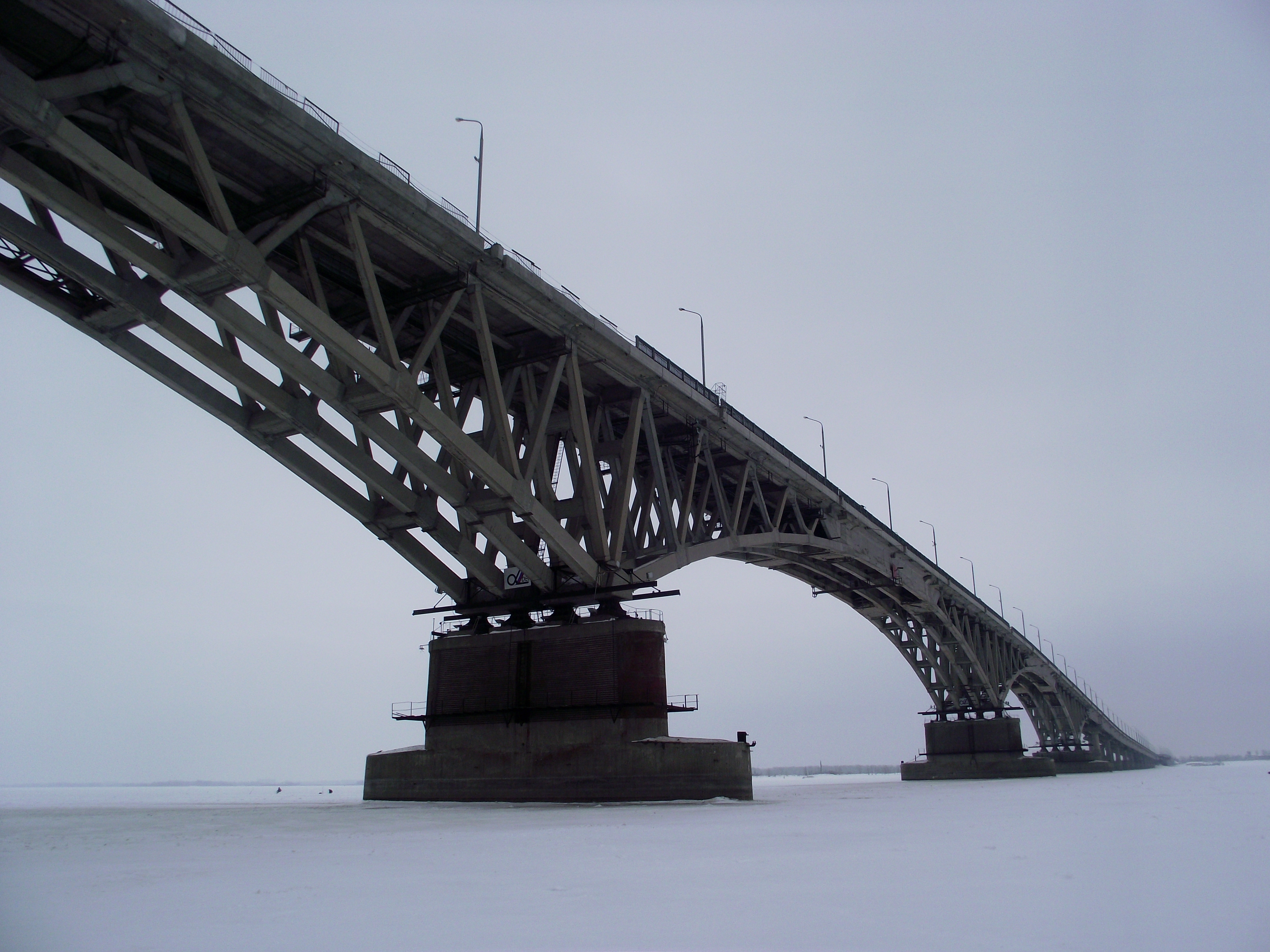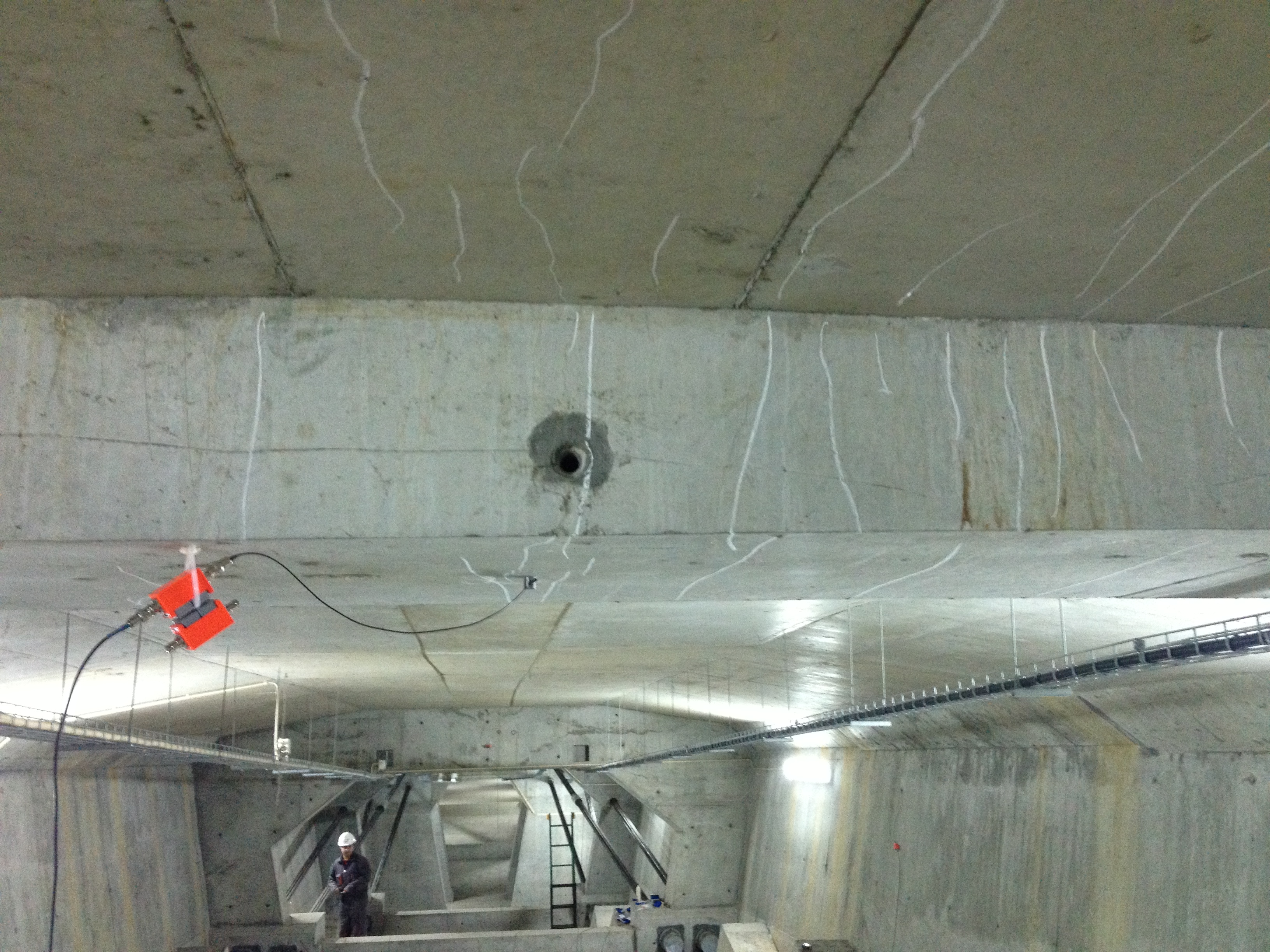Acoustic Emission Structural Health Monitoring of Critical Structures
Structural Health Monitoring (SHM) is a field of engineering that deals with diagnosis and monitoring of structures during their operation. The primary goal of SHM is detection, identification, assessment and monitoring of flaws or fault conditions that affect or may affect the future safety or performance of structures. The acoustic emission method uniquely fits the concept of SHM due to its capabilities to examine, monitor structures and assess structural integrity during their normal operation. Reinforced concrete structures that are recommended for SHM include first of all bridges, tunnels, buildings, nuclear containments, dams as well as their structural elements.
Acoustic emission SHM are conducted periodically or continuously, under normal service conditions or under special loading procedures. Examples of typical examinations are:
- Detection of active concrete cracking and other flaw-indications in the structure.
- Monitoring general electro-chemical corrosion and corrosion cracking in rebar and cables.
- Assessment of structures or their elements under normal service conditions.
- Monitoring long term changes in the structural integrity.
- Evaluate serviceability of a structure under specific load conditions.
- Failure prediction.
- Characterize mechanical and fracture mechanics properties of concrete members used in a structure.
Acoustic emission examination results are achieved through detection, location and characterization of active AE sources within the concrete, and reinforced concrete. Such sources include micro- and macro- crack development in concrete due to fatigue, overload, settlement, environmental effects, chemical attack or trauma such as impact, seismic activity, fire, or explosion. Other AE source mechanisms include corrosion of rebar or other metal parts, corrosion and rupture of cables in pre-stressed concrete, as well as frictional noises due to structural movement and/or instability.
Why acoustic emission has no alternative?
In-time detection and assessment of cracks and other flaws in concrete structures is of great importance. A number of methods have been developed and standardized in recent decades for non-destructive evaluation of concrete structures as well as methods for in-place evaluation of concrete properties. They include visual inspection, stress-wave methods such as impact echo, pulse velocity, impulse response, nuclear methods, active and passive infrared thermography, ground-penetrating radar and other. These methods have multiple advantages however in most of the cases are not used for overall inspection of the concrete structure due to limited accessibility, significant thickness of concrete components or other reasons. Also, these methods are not applied for continues long-term monitoring, cannot be used for estimation flaw propagation rate or evaluation of flaws’ sensitivity to level operational loads and/or environmental changes.
In addition to the above mentioned non-destructive tests methods, vibration, displacement, tilt, shock, strain monitoring and some other methods are applied to monitor periodically or continuously various factors that can affect integrity of concrete structures during operation. However, it is important to note that these methods monitor risk factors that are not necessary associated with actual damage accumulation in the monitored structures.
Crack opening monitoring can be performed as well using different technologies including moving scales, vibrating wire, draw wire and other crack opening displacement meters, optical and digital microscopes as well strain gages of several types or even visually. However, this type of monitoring can be performed only on surface cracks and requires long monitoring times.


